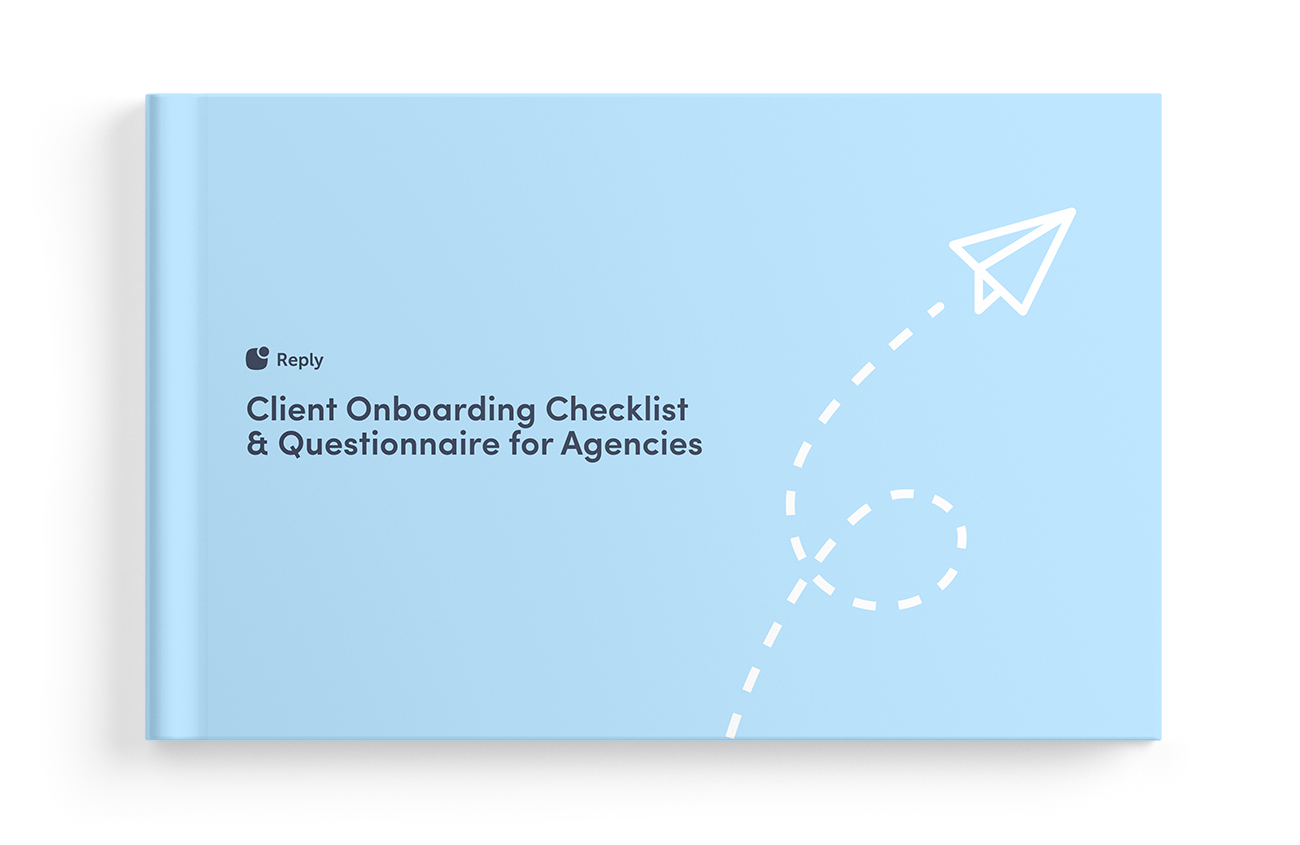Best practices (and things to consider) for smooth client onboarding
While the processes may differ depending on a number of factors from the kind of services you offer to the project specifics, there are certain things that help you lay a solid foundation for a successful partnership.
We asked a few established agencies to share their best practices for a successful client onboarding process.
Have a clear picture from the start
What makes an onboarding process successful is a smooth start and a clear picture of the entire process. Certainly, this initial stage is all about understanding the client’s goals, their customers, and the competition. But the onboarding itself is way more complex than a spreadsheet with questions.
Try leading with an intro conversation where you walk your client through the entire process. Listen to what they have to say and what they expect from your cooperation. At the end of the day, it’s not how much you know about your client but how well you’re able to leverage this information to address the problem they’ve asked you to deal with in the first place.
Oleksandr Robeiko, Head of PM at Respect.Studio
Visualize and document every aspect of the process
Here are some of our best practices for smooth client onboarding:
- Deadlines & communication. Setting clear deadlines is critical for client onboarding since it defines expectations and facilitates a smooth and efficient process. By explicitly specifying the schedule for each phase, both the customer and the internal team can coordinate their efforts and resources accordingly. Deadlines help to manage expectations, eliminate misunderstandings, and preserve accountability. When customers are informed about the timeframes for each stage of the onboarding process, they may plan their own resources and make timely decisions.
Insight! By informing the client about the delay, you look way more professional than by missing the deadline and pretending that everything is all right.
- Visualize the onboarding process. Visualization of the onboarding process allows both the customer and the team to understand the sequence of activities and dependencies and ensures that all important tasks are completed. The visual depiction also aids in describing the process to the client, allowing them to understand the overall structure as well as the effort required from both parties.
- Frameworks for every aspect of the game. Having a solid process in place will ensure that every onboarding aspect is addressed and polished to perfection. Frameworks lay the groundwork for consistency and continual growth by documenting lessons learned and implementing feedback. At Belkins, we framework everything starting from client communication protocols to data collection processes. That’s how we provide a high-quality onboarding experience for every client.
To sum up, setting explicit deadlines, visualizing the onboarding process, and developing frameworks are all critical components of client onboarding. They help to ensure effective planning, efficient execution, and consistent quality, which leads to successful client relationships and beneficial outcomes.
Yuriy Boyko, Head of AM at Belkins
Set and communicate the expectations
Smooth client onboarding comes down to two things: communication and setting expectations. We ease the handoff between Sales and Client Success by sending an onboarding email from me (CC’ing the salesperson who closed the deal and the lead strategist on the account) within one day of signing the contract. This email provides clear action items so clients know what to expect between closing and kickoff and what we need from them in the meantime – access to certain tools, invoice information, etc.
This email includes a client onboarding questionnaire through which we gather information to inform our initial research and discovery process. This document also allows us to set expectations and lay groundwork for our work with clients, enabling them to come prepared (mentally and physically) to our strategy meetings.
Allie Decker, Co-founder & Head of Client Success, Omniscient Digital
Build relationships with the clients
Some businesses believe erroneously that they start to work with their clients only when they are progressing toward a goal. At GrowthMate, we believe it begins way earlier – at the client onboarding stage.
We start with a cooperation roadmap with a client and use it to craft a comprehensive presentation. Usually, we add a strategy, details of an agreement, and questionnaires if needed. Eight to 10 slides should be enough to make sure you and your client are on the same page.
Come prepared not only business-wise but also, I’d say, “people-wise.” Research your client’s location and their interests – a healthy curiosity about backgrounds usually pays off big time.
After a presentation, if the client is ready to move on – communicate the deadlines. At GrowthMate our rule is to deliver initial results (in our case it’s backlinks) in a very short period of time for a great impression and the “wow” effect.
Overall, you have to create a system with clear steps for both sides and make sure to follow it. Great systems never fail and are the backbone of your success stories.
Andriy Zapisotskyi, Founder at GrowthMate
Create consistent workflows within your team
When onboarding clients, it’s important for us to ensure they go through a smooth, transparent, well-structured process with no need to jump through hoops. We strive to create a similar experience for all our clients, creating consistent workflows throughout the agency.
We are usually guided by a few principles that help us achieve effective client onboarding.
- Consistent attention, care, and communication. You should never leave a client hanging, wondering what’s the next step to take. They should stay in the know about all the steps of the collaboration process, and understand what’s happening when, who they’ll be communicating with, how often, and what’s required from their side.
- Clarity and transparency about the collaboration process. This will help avoid future surprises and misunderstandings. We let our clients know how the results will be measured, what the reporting period is, and what they should expect as a result. When we are dealing with a brand new website that obviously is going to take a long time to get SEO results, we mention it to the client from the jump to avoid giving them the illusion of instant success.
- Learning as much about the business as possible. We strive to understand how the product works, the pros, cons, pricing, audience, etc. We get on the same page in terms of the product as we build trust with our client by speaking the same language. To get there we usually schedule a product demo call with a client’s team, sending detailed questionnaires for a client to fill out, asking about their buyer persona, competitors, and their expectations from our collaboration.
Olga Mykhoparkina, founder and CEO at Quoleady






